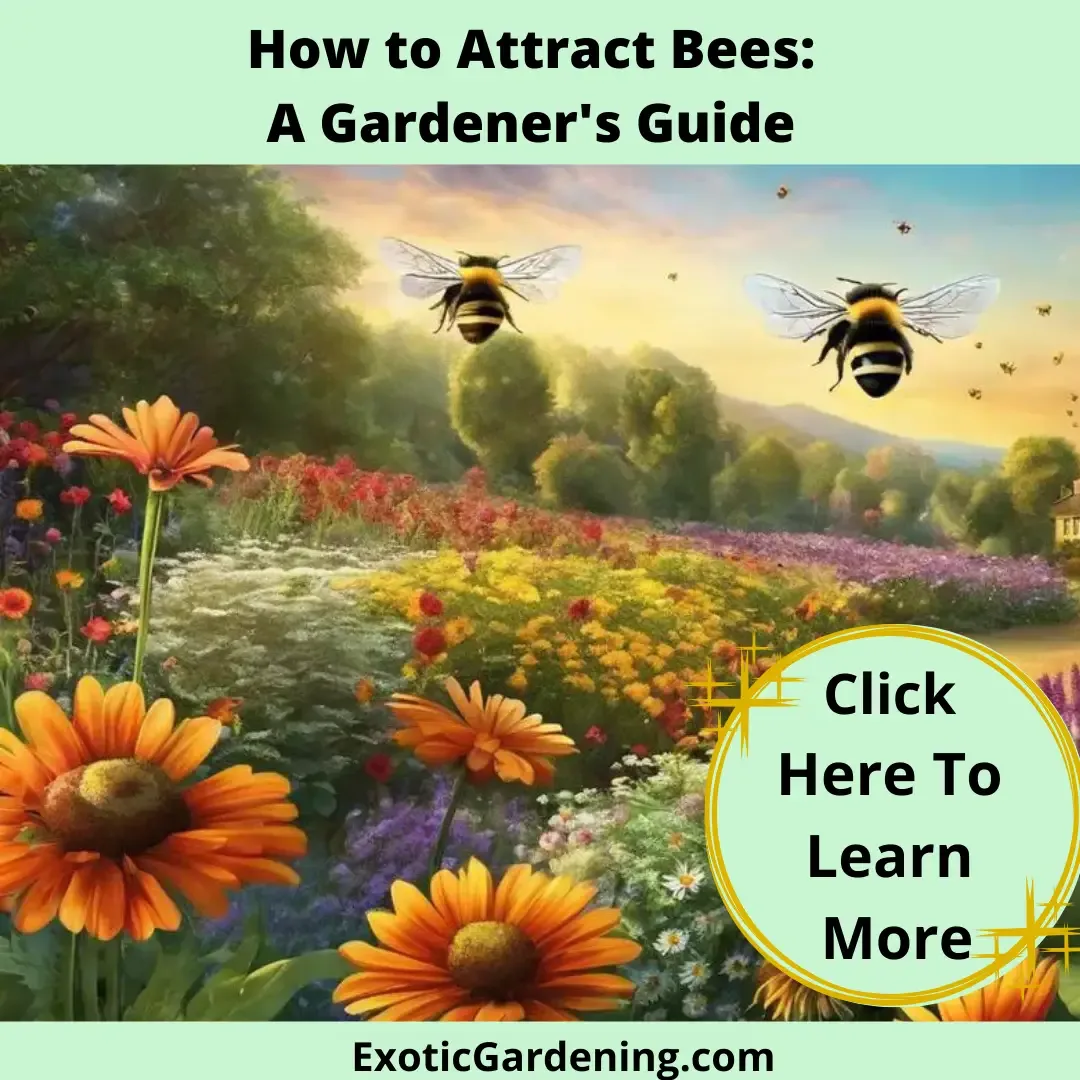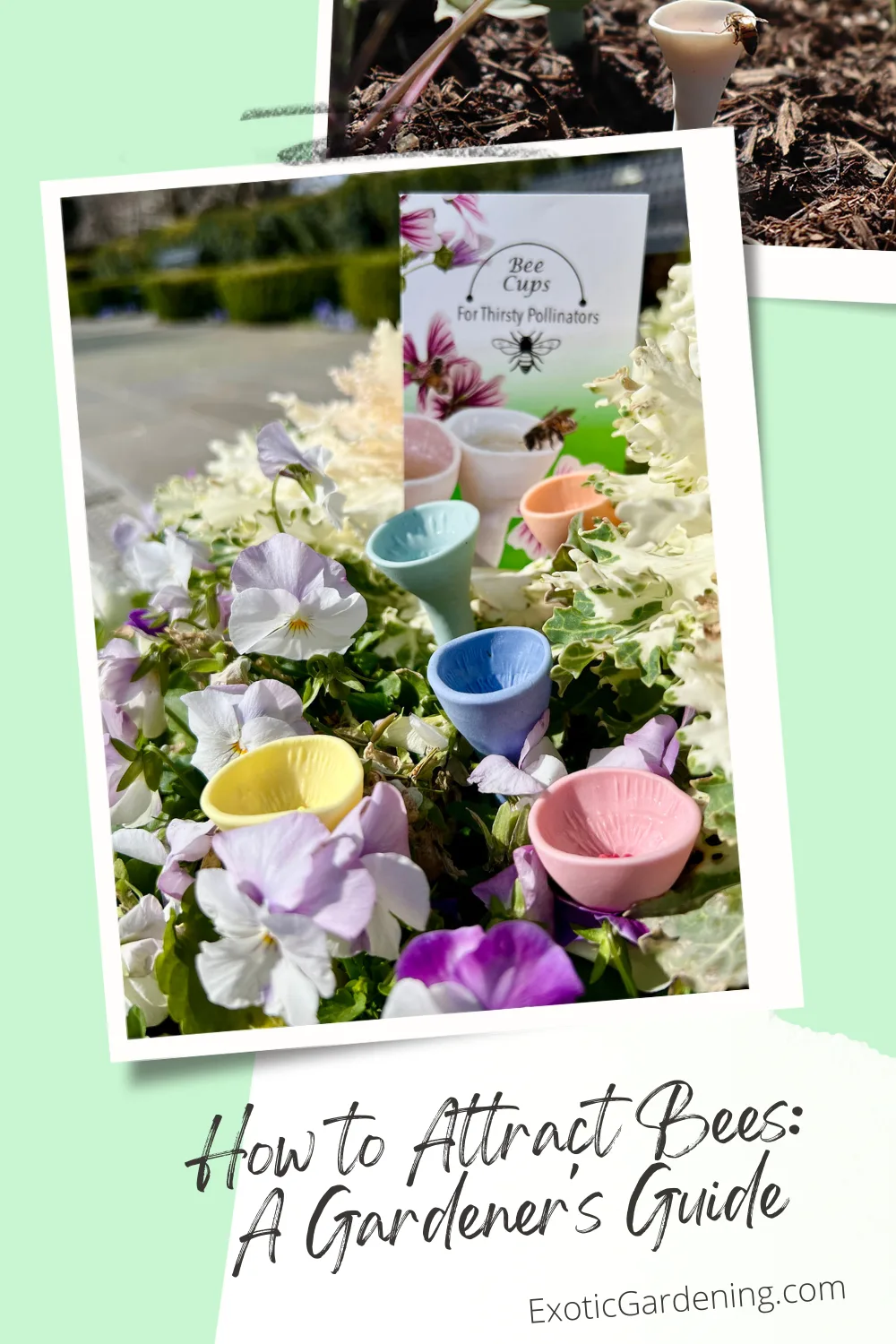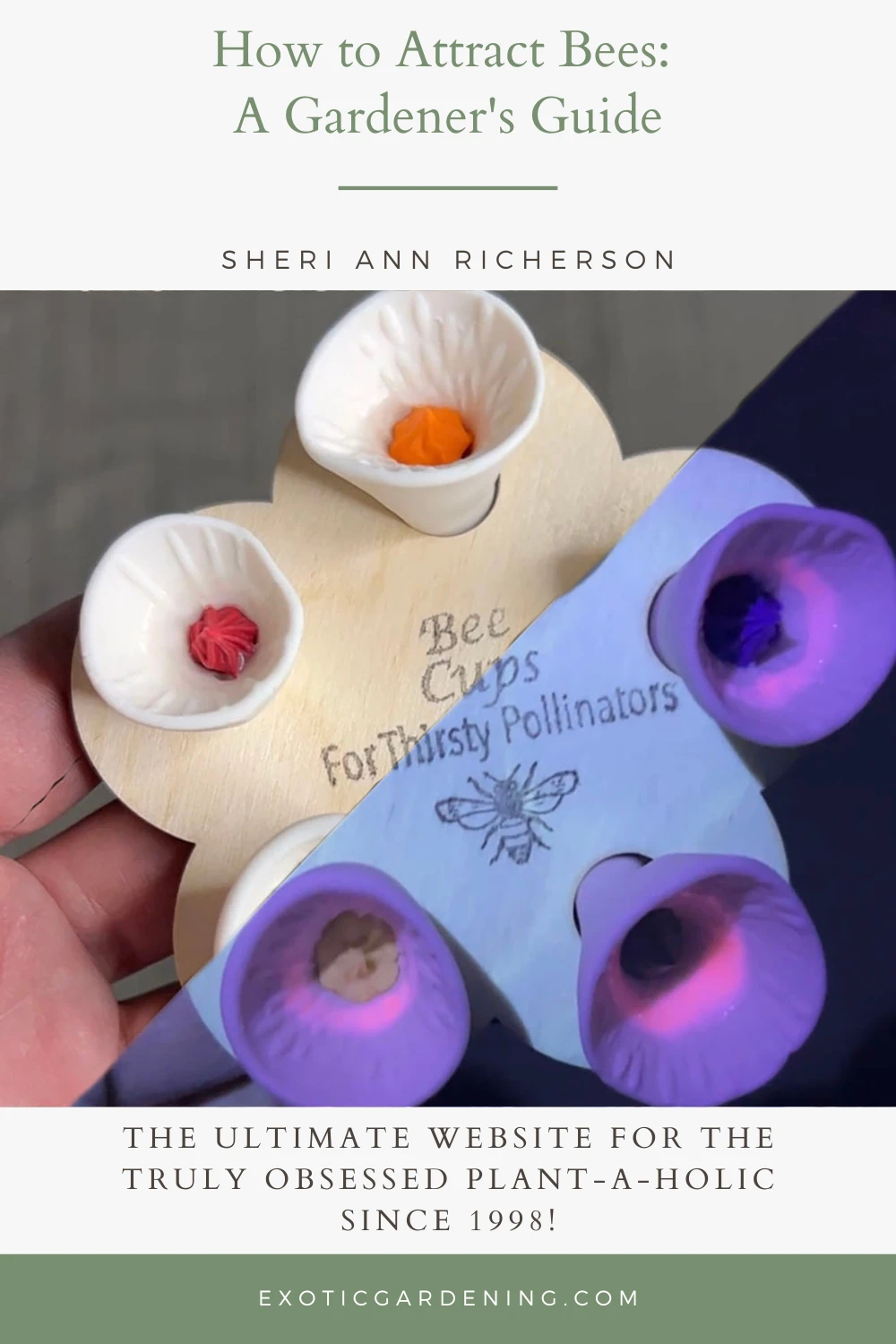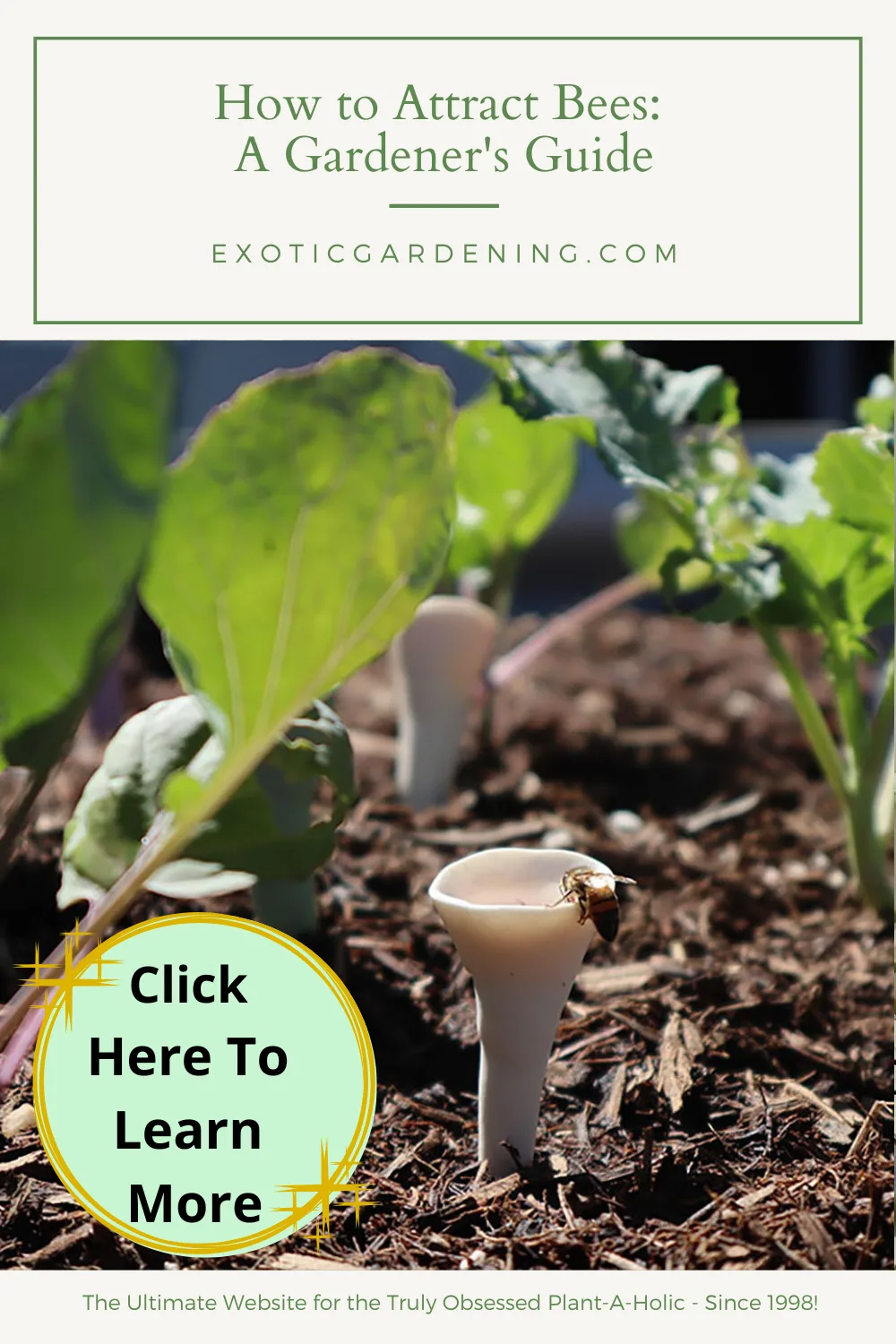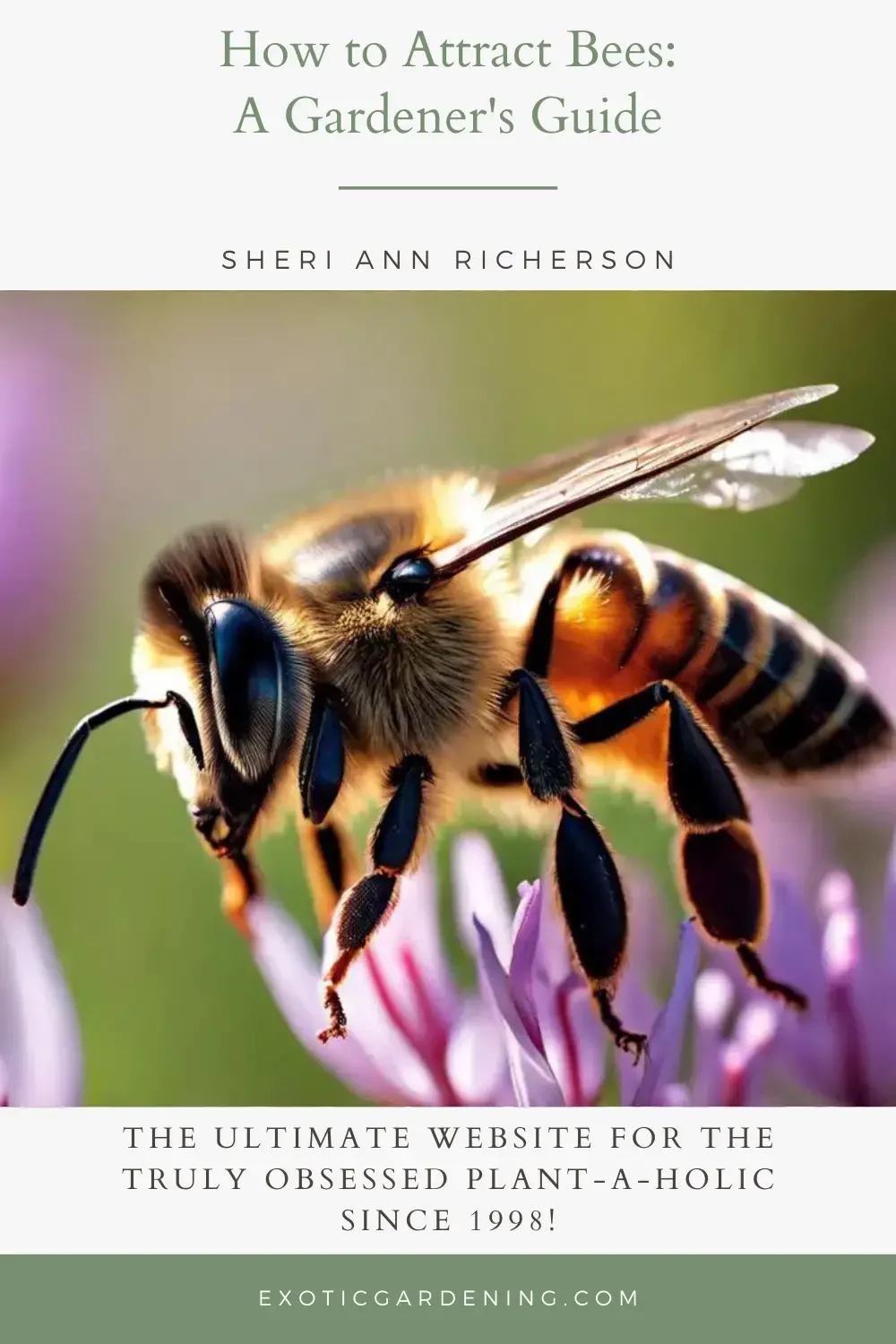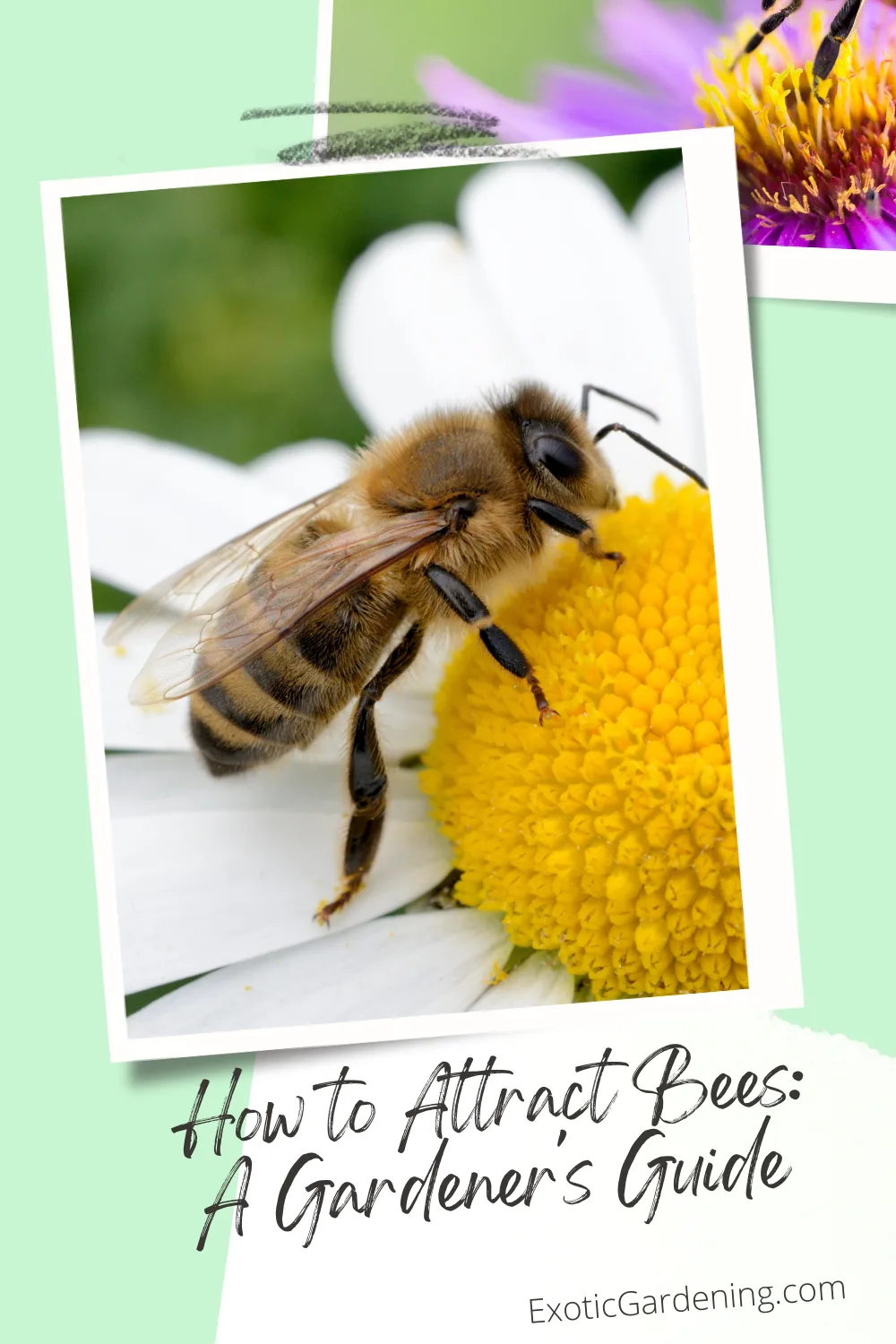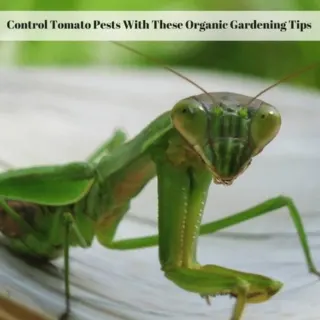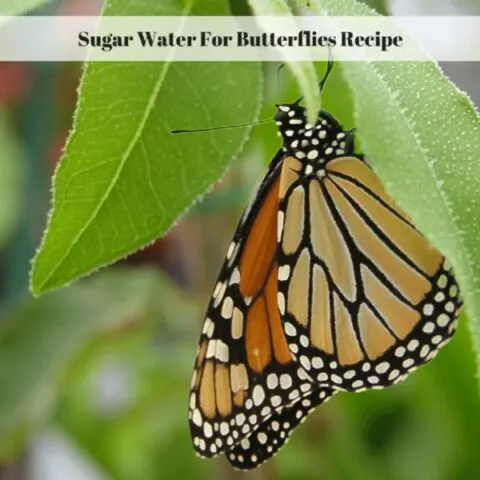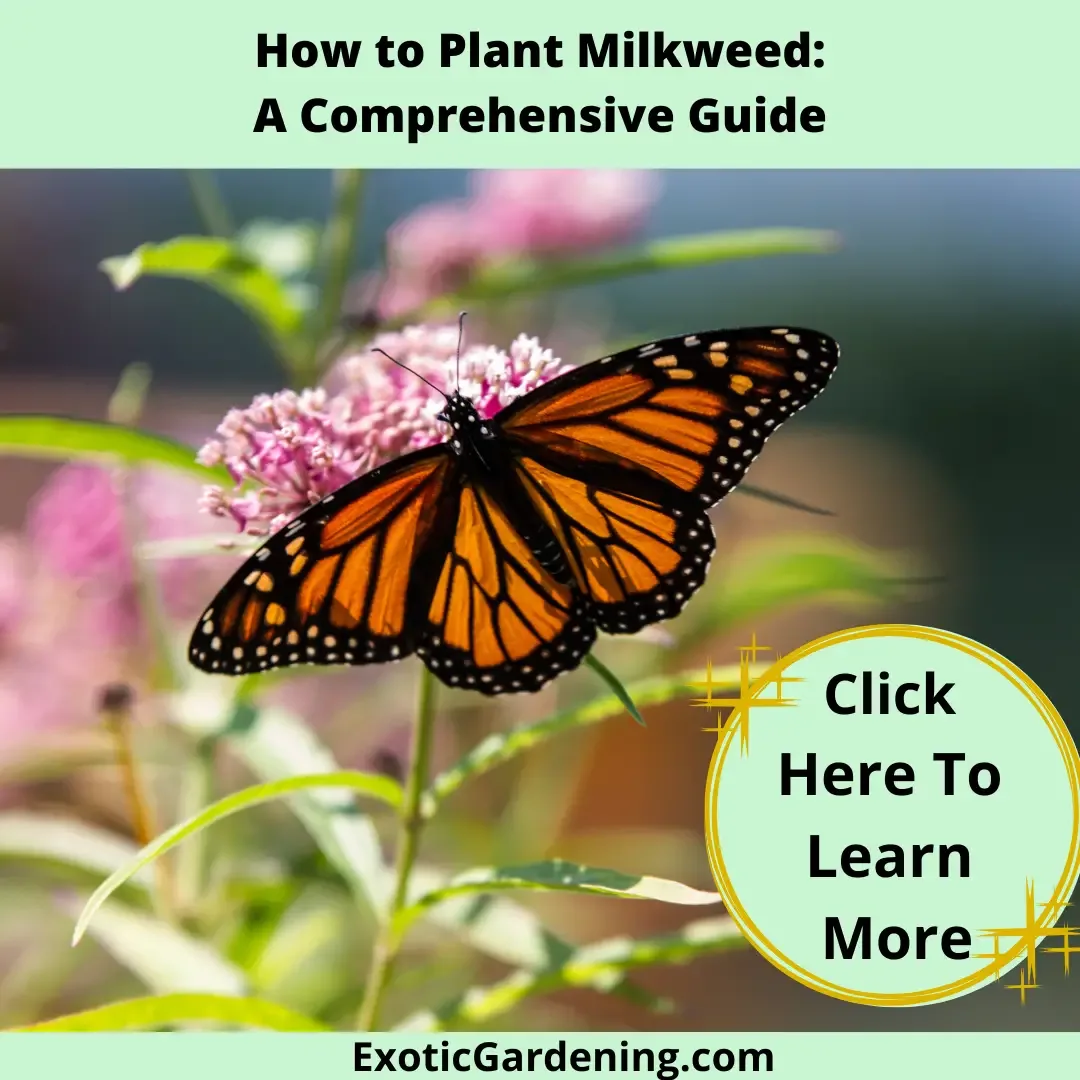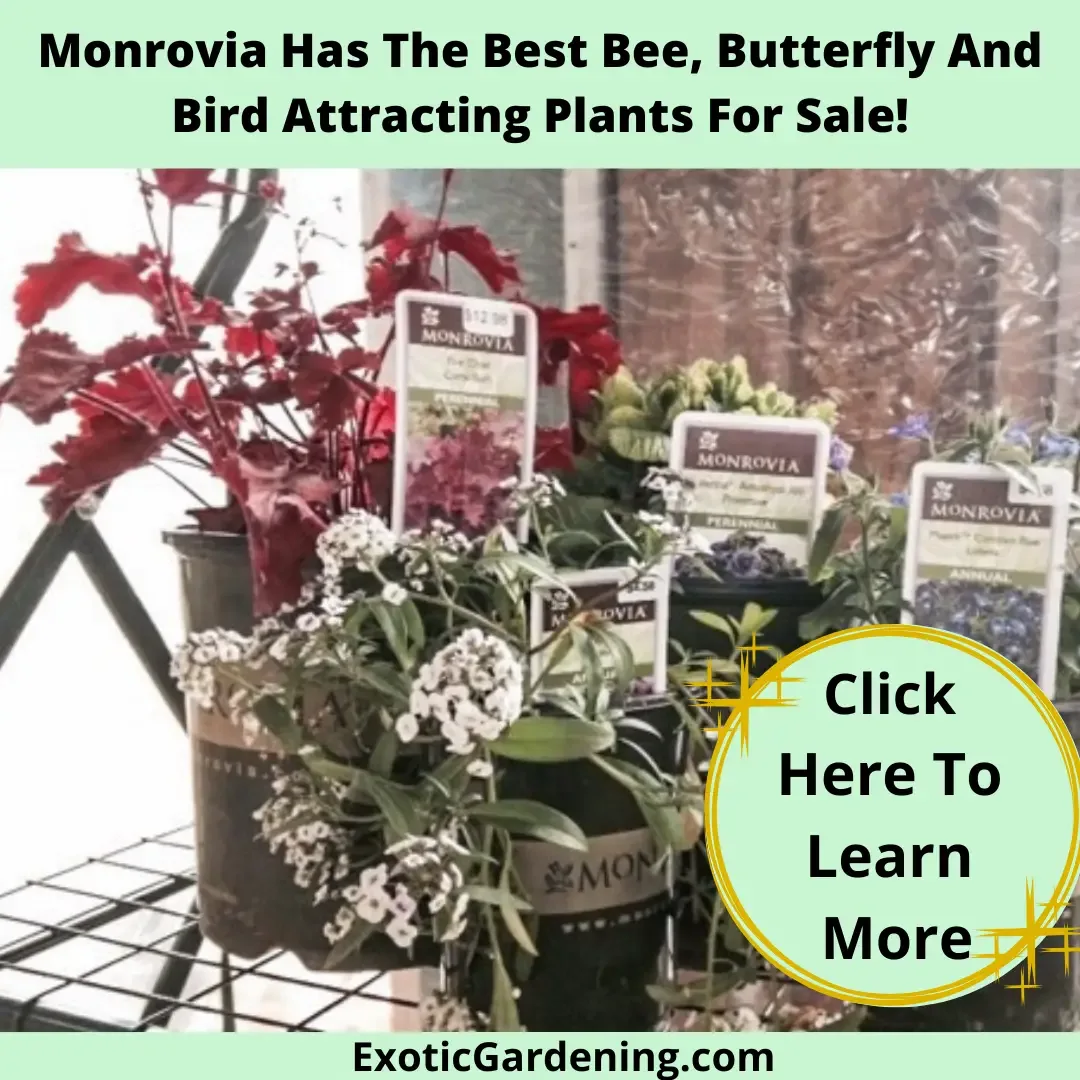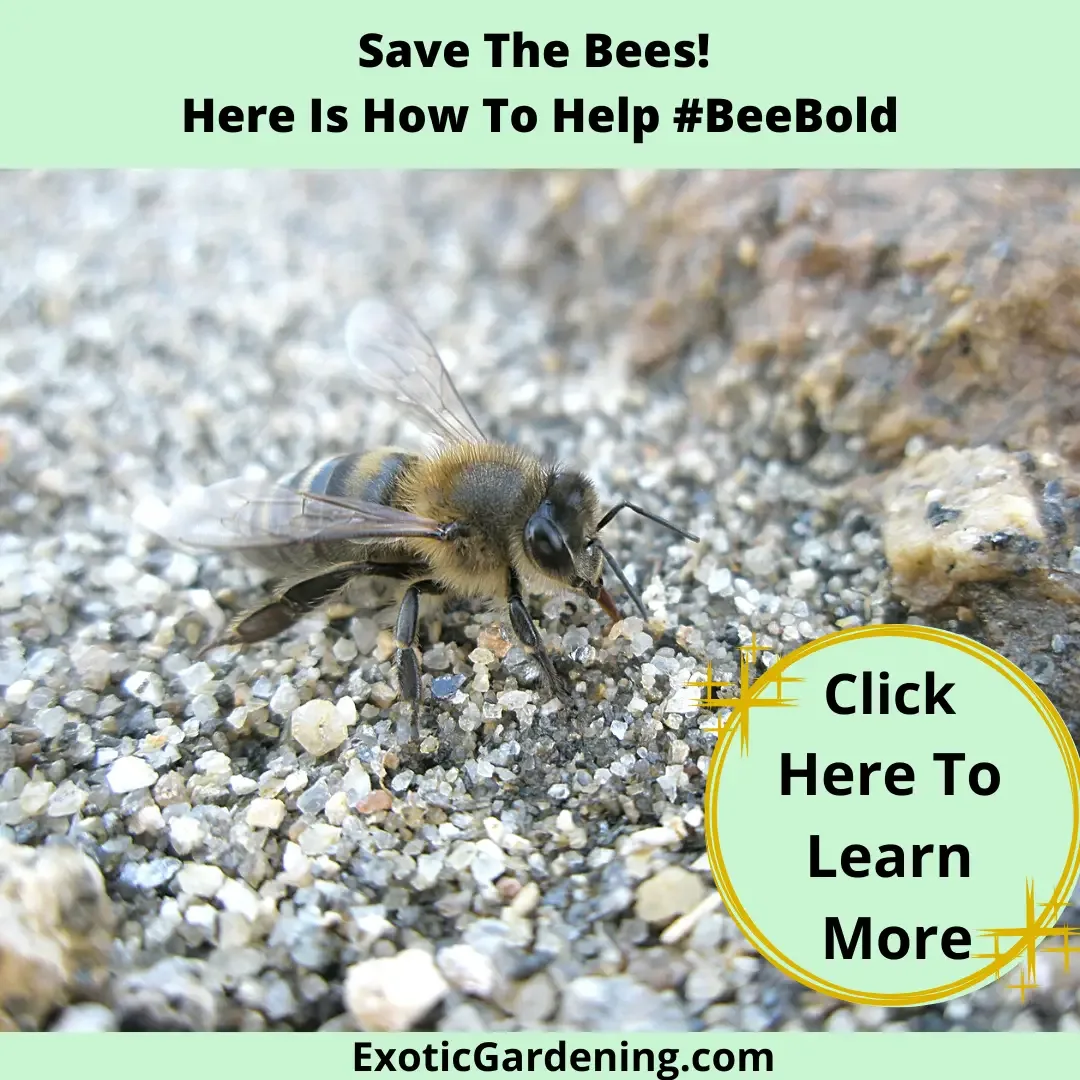Disclaimer: I did receive the Vision Bee Cups, a hat and a flashlight for free in exchange for my honest review. All opinions are my own.
Learning how to attract bees is more than just a gardening quest; it's a journey to create a buzzing haven for these essential pollinators.
Picture your garden as a lively hotspot, with bees playing the starring role in enhancing not just the vibrancy but also the productivity of your green space.
Have you ever marveled at the dance of bees among flowers, knowing they're the unsung heroes behind a bountiful harvest?
Well, get ready to transform your garden into a bee utopia.
From choosing the right plants that act like a magnet for bees to setting up a safe and welcoming environment, we're about to explore practical strategies that will not only attract bees but ensure they stick around and thrive.
So, if you're keen to turn your garden into a buzzing paradise that contributes to the health of your plants and the environment, you're in the right place.
Let's dig into the nitty-gritty of creating a bee-friendly space that will have your garden literally humming with life!
Types of Plants Attractive to Bees
So, how do you welcome a relentless buzz of bees into your green spaces?
It's all about the plants you choose!
Bees play a vital role in our environment and food system, thanks to their exceptional pollination skills.
Creating an inviting environment for these striped pollinators isn't just a pastime; it serves an ecological purpose too.
Let's dive into the world of bee-alluring plants that can transform your garden into a haven.
- Lavenders: A Bee's Dream - First on the list is Lavenders, a bee's dream come true. Beyond their soothing scent for humans, these purple marvels are nectar-rich bee dining paradises. Blooming throughout summer, they add aesthetic pleasure to your garden with minimal maintenance. Just place them in a sunny spot, and you'll be rewarded with a colorful bee-swarmed display.
- Sunflowers: Towering Symbols of Summer - Next up, we have Sunflowers, towering symbols of summer that bees can't resist. With large centers and brightly colored petals, they provide yummy pollen and nectar for both bees and other wildlife. Their vibrant presence adds a splash of color to the garden, making them a win-win for all.
- Borage: The Humble Bee Magnet - Don't underestimate the humble Borage. Often overlooked, this plant is a bee magnet due to its copious nectar supply. When in full bloom during the summer, their beautiful blue flowers are a sight to behold, and they readily self-seed, ensuring ongoing feasts for the bees.
- Squash Blossoms: Irresistible Bee Treats - Adding a buzz to any vegetable garden, Squash blossoms are irresistible to bees. Their bright yellow flowers secrete nectar and pollen, serving both the bees and your dinners simultaneously. It's a delightful win-win situation.
- Echinacea or Coneflower: Bee-Friendly Perennials - Last but not least, consider the Echinacea or Coneflower. These hardy perennials are a big hit with bees, offering a bountiful nectar supply. With various vibrant colors, they ensure your garden remains awash with color from summer into fall.
In summary, cultivating a garden rich with these plants transforms it into a banquet of nectar and pollen, making it irresistible for bees.
This not only ensures a healthy, happy bee population but also adds a vibrant dose of color and visual appeal to your green spaces.
The harmony between gardening enthusiasm and maintaining a crucial ecological balance perfectly exemplifies the cyclical beauty of nature.
So, keep inviting bees into the heart of your green spaces because when bees thrive, we all benefit.
Creating Bee-Friendly Habitat
Creating a bee-friendly habitat in your garden goes beyond just picking the right plants.
There are other essential factors that you may want to consider such as providing a water source and using organic gardening methods.
Here are a few more elements to incorporate into your garden to make it a haven for bees:
- Plant Native Species: While bees appreciate any nectar-rich flowers, they have a predilection for native plants in their locale. For instance, if you're gardening in the Midwest of the United States, Goldenrod, Aster, and Joe-Pye Weed are excellent choices. This tactic not only provides food that bees need but also supports local ecosystems.
- Create a Season-Long Bloom: Consider designing your garden so that something is always in bloom from early spring until late fall. This provides bees with a steady source of food. For example, Crocus and Blueberries bloom in spring, while Coreopsis and Blanket Flowers add color throughout the summer. Be sure to add fall bloomers such as Hardy Ageratum and Calendula.
- Install a Bee Bath: Despite their minuscule size, bees require water. However, they are not good swimmers and can quickly drown in deep water. Therefore, consider installing a 'bee bath' - a shallow dish filled with flat stones, marbles or corks protruding from the water surface where bees can safely perch. Or better yet, check out the Vision Bee Cups I talk about below.
- Minimize Lawn Space: Lawns are generally quite barren spots for bees. Detract from the expanses of pure green, and consider adding borders, islands, and meadows of mixed flowers. This not only breaks the monotony but is a treat for the bees.
- Provide Solitary Bee Homes: Not all bees are part of a colony. In fact, the vast majority of bee species are solitary and hence need their own house. Constructing a bee home is straightforward; cut a bundle of hollow stems to the same length, bind together, and hang in a sunny place.
- Avoid Chemicals: A caveat to creating a bee-friendly habitat is to abstain from using harmful insecticides, pesticides, or herbicides. Opt instead for organic methods of pest and weed control to protect your new bee friends.
- Add a Beegetable Patch: Growing veggies isn't just beneficial for you, but your winged visitors too. Crops such as beans, cucumbers, or peppers are perfect because their flowers are nectar-rich.
Incorporate these seven steps into your gardening strategy and you will undoubtedly have a garden buzzing with life.
Remember, every garden counts when it comes to creating bee-friendly habitats.
By making small changes to yours, you're contributing to the bigger picture of bee conservation.
Let's all do our part in saving these vital pollinators!
Vision Bee Cups: A Beautiful and Bee-Friendly Garden Addition
I've been on the lookout for unique ways to attract more bees to my garden, and I recently stumbled upon Vision Bee Cups.
I was sent a free gift package that included one set of the Vision Bee Cups, a hat, and a UV flashlight along with some information, in exchange for my honest opinion and of course telling all of you about the product once I formed an opinion.
Let me tell you, these little porcelain beauties have truly impressed me!
Aesthetically Pleasing and Functional
Vision Bee Cups are crafted to look like delicate flowers, adding a charming touch to any garden.
They hold just the right amount of water – enough to give bees a refreshing drink without becoming a breeding ground for mosquitoes.
Jen Rose, the eco-artist behind these cups, designed them with a special Ultraviolet ceramic glaze that bees can see, which mimics the natural way flowers attract them.
It’s like having a tiny art piece that’s also a practical solution for our pollinator friends.
Easy to Use
Using these cups is a breeze.
You simply take them out of the packaging and stick them into the soil using the pointed end.
I placed mine near my plants but kept them in open areas so the bees could easily find them.
It’s such a simple yet effective way to support the bees.
No Mosquito Problems
One of my initial worries was whether these cups would attract mosquitoes.
Thankfully, they hold only a teaspoon of water, which usually evaporates by the end of the day.
This smart design ensures that mosquitoes don’t get a chance to breed, keeping the environment safe for bees.
Cleaning and Maintenance
Maintaining these cups is straightforward.
I place mulch or rocks around them to prevent dirt from splashing in.
If hard water buildup makes them look dull, I soak them overnight in vinegar and then sand them with fine-grit sandpaper.
They even survive the dishwasher – just make sure they don’t bump into other items.
Perfect Colors for Bees
I learned that bees see colors differently than we do.
They can see yellow, green, blue, and ultraviolet but not red or orange.
The Ultraviolet-Reactive glaze on these cups is clear to us but glows bright pink to bees, making them look like flowers.
This feature is fantastic as it attracts bees even when the cups are dry.
Durability Through Seasons
These cups are surprisingly durable.
Although it’s best to bring them indoors during freezing weather to keep them in top shape, they are made to withstand a range of temperatures and even survived marble-sized hail.
I feel confident leaving them outside most of the year without worry.
My Experience
I noticed that the cups can dry out quickly, which is fine.
Each cup holds just a teaspoon of water, which can evaporate within 30 minutes to 12 hours depending on the weather.
Bees are most active mid-morning, so I fill them around 10:30 am.
Even a tiny drop of water can be a lifesaver for a thirsty bee.
Final Thoughts
Overall, I’m thrilled with my Vision Bee Cups.
They’re a beautiful, functional, and eco-friendly addition to my garden.
If you’re looking to support our bee population while adding a touch of charm to your outdoor space, I highly recommend giving these a try.
The Essential Role of Bees in the Garden
Beyond their enchanting buzz and vibrant presence, bees are the unsung heroes that weave the very fabric of your garden's vitality.
Their essential role in pollination goes far beyond mere aesthetics, influencing the health and productivity of your green space.
A Symbiotic Dance with Native Plants
Bees act as nature's diligent pollinators, facilitating the reproduction of plants and ensuring the abundance of fruits, vegetables, and flowers.
This symbiotic relationship extends to native plant species, which have co-evolved with bees over millennia.
By fostering the growth of these plants, you create a harmonious environment where bees find the perfect balance of nectar and pollen, enhancing both their well-being and the overall health of your garden.
Blooms Throughout the Seasons
Gardens that embrace blooms throughout the seasons transform into bustling bee hotspots.
This continuous supply of nectar and pollen acts like an open invitation to bees, turning your garden into a haven where they can feast from early spring to late fall.
Diversifying your garden with flowers that bloom at different times ensures a sustained source of nourishment, supporting the buzzing inhabitants year-round.
A Refreshing Respite: The Bee Bath
As much as bees are drawn to the blooms, they also require sustenance beyond the floral buffet.
Providing a bee bath, a simple shallow dish with water and stones, offers a vital water source for these diligent workers.
This small gesture goes a long way in ensuring the well-being of bees during their busy foraging days.
Embracing Nature's Ballet
In essence, bees are not just visitors but essential contributors to the beauty and productivity of your garden.
Their pollination prowess and the intricate dance between flora and fauna they orchestrate bring life to your green spaces.
By understanding and nurturing their role, you embark on a journey of creating not just a garden but a thriving ecosystem where the harmonious collaboration between bees and plants flourishes.
In this buzzing ballet, your garden becomes a vibrant stage where nature's performers, the bees, play a starring role.
The Harmony of Bees: Enhancing Beauty and Prosperity
Bees present a harmonious blend of elegance, diligence, and vitality to our gardens, enhancing their beauty while playing an unavoidable role in their prosperity.
Introducing bee-friendly plants, and creating a nurturing habitat for them is not only beneficial to your garden but also contributes to maintaining and supporting the overall bee population.
Understanding and respecting their indispensable role in our ecosystem can pave the way for us to coexist with bees harmoniously and with mutual benefits.
Each time we create a safe haven for them in our gardens, we step closer to a world where the hum of bees becomes a persistent, comforting background accompaniment to our daily lives.
Buzzing with Life: The Ultimate Pollinator Series
How to Plant Milkweed: A Comprehensive Guide
Discover a world of milkweed gardening: Sow Right Seeds, Burpee, Lowe's, and Amazon—your complete guide awaits!
Monrovia Has The Best Bee, Butterfly And Bird Attracting Plants For Sale!
Discover how to create a vibrant garden with Monrovia's bee, butterfly, and bird-attracting plants. A pollinator's paradise awaits!
Save The Bees! Here Is How To Help #BeeBold
Join the Fight to 'Save the Bees' and Make a Positive Difference with Our Insightful Guide to Bee Conservation.
Cultivating Biodiversity In Your Garden: Plants That Give Back
Discover the art of cultivating biodiversity in your garden with our expert tips on choosing plants that enrich your ecosystem.


